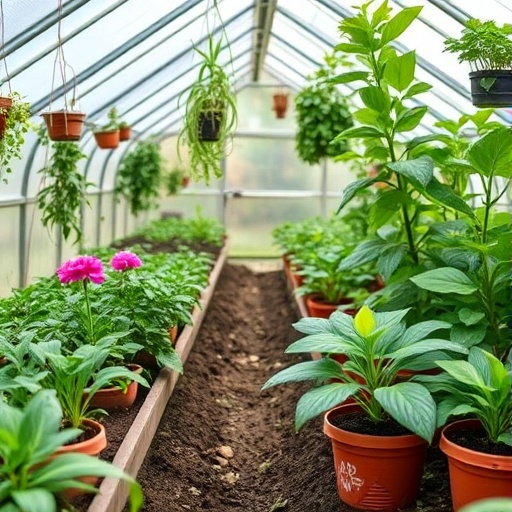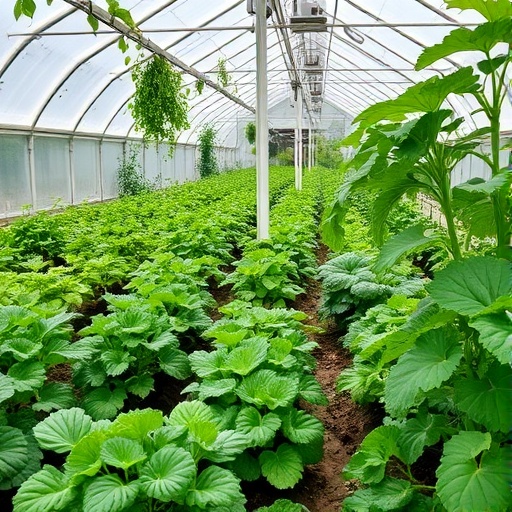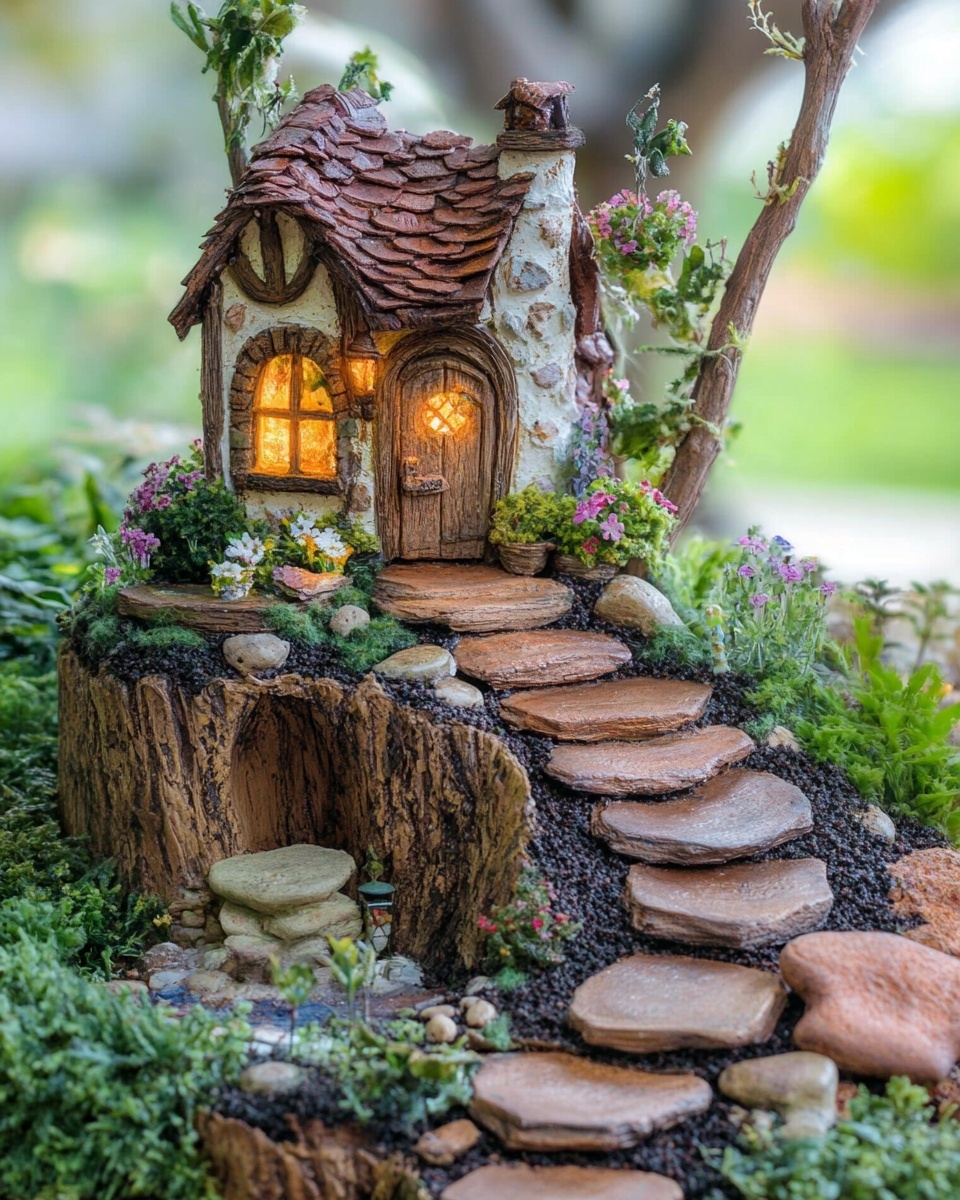Is it truly possible to cultivate a flourishing, chemical-free garden even in challenging climates, or is the dream of fresh, organic produce accessible only to those with sprawling outdoor spaces? For many aspiring green thumbs, the prospect of year-round harvesting feels out of reach, especially when faced with unpredictable weather or limited land. However, with the right approach and a little ingenuity, embracing organic gardening tips within a greenhouse environment can transform your growing aspirations into a tangible reality. In fact, USDA data indicates a 55% increase in small-scale greenhouse farming over the last decade, showing a clear trend towards controlled-environment agriculture. This guide will help you unlock the secrets to a thriving organic greenhouse.
Tools & Materials Needed
To embark on your organic greenhouse journey, gathering the right tools and materials is crucial. This foundational step ensures a smooth and enjoyable planting process, setting you up for success.
Essential Tools:
- Hand Trowel and Cultivator: For planting, weeding, and aerating the soil. Look for ergonomic designs to reduce strain.
- Gardening Gloves: Protect your hands from dirt, thorns, and potential irritants.
- Watering Can or Hose with a Gentle Spray Nozzle: Essential for precise watering without damaging young plants.
- Pruning Shears: For detailed shaping, deadheading, and harvesting. Keep them clean to prevent disease spread.
- Soil Thermometer: Critically important for monitoring soil temperature, especially for germination. Different seeds have optimal temperature ranges for sprouting.
- pH Testing Kit: Organic gardening thrives on balanced soil. A pH kit helps you understand your soil's acidity or alkalinity.
Eco-Friendly & Budget-Friendly Alternatives:
- DIY Seed Starter Pots: Instead of buying plastic trays, repurpose egg cartons, toilet paper rolls, or newspaper pots. These are biodegradable and gentle on young roots.
- Composting Bin: A simple DIY compost bin from pallets or wire mesh can turn kitchen scraps and yard waste into nutrient-rich soil amendments. This drastically reduces the need for purchased fertilizers.
- Recycled Rain Barrels: Install rain barrels to collect rainwater, a naturally soft and chemical-free water source, saving on your water bill and reducing your environmental footprint.
- Homemade Pest Sprays: Utilize ingredients like neem oil, garlic, or dish soap for natural pest control, avoiding synthetic pesticides.
Essential Materials:
- Organic Potting Mix: Opt for a high-quality, organic-certified potting mix that offers good drainage and aeration. Look for blends containing coco coir, compost, and perlite.
- Organic Seeds or Starter Plants: Always choose certified organic seeds or nursery plants to ensure your garden starts chemical-free. This is fundamental to all organic gardening tips.
- Compost: A vital organic amendment that improves soil structure, fertility, and water retention. Homemade or store-bought, ensure it's well-aged.
- Organic Fertilizers: Think beyond chemical feeds. Options include worm castings, bone meal, blood meal, fish emulsion, and kelp meal, chosen based on your plants' specific nutrient needs.
- Mulch: Straw, wood chips, or shredded leaves help retain soil moisture, suppress weeds, and regulate soil temperature.
- Labels and Markers: To keep track of your plant varieties and planting dates.
Time & Effort Overview
Gardening, especially organic gardening in a greenhouse, is a rewarding endeavor that requires varying levels of time and effort depending on your aspirations. For a typical small to medium-sized greenhouse (around 10×12 feet), here’s what you can expect:
- Initial Setup (Greenhouse Assembly & Bed Preparation): This can range from 1-3 days for a pre-fabricated kit to several weeks for a custom-built structure. Soil preparation, including adding compost and amendments, usually takes another 4-8 hours.
- Planting: Depending on the number of plants and complexity of your layout, planting can take anywhere from 2-6 hours.
- Daily Maintenance: Plan for 15-30 minutes daily for watering, checking on plants, and simple observations. This increases to 1-2 hours weekly for more involved tasks like pruning, pest inspection, and harvesting.
- Bi-Weekly/Monthly Tasks: Fertilizing, major weeding, and pest management rounds might take 1-3 hours every two to four weeks.
Compared to Outdoor Gardening: Many crops grown in a greenhouse can mature 30% faster than their outdoor counterparts due to consistent temperatures and protection. For example, tomatoes often yield earlier and longer in a greenhouse setting.
Difficulty Level: We rate organic greenhouse gardening as Intermediate. While the controlled environment simplifies many aspects (like pest management and weather protection), maintaining optimal conditions (humidity, temperature, ventilation) and understanding organic feeding cycles requires a bit more knowledge than basic outdoor container gardening. However, with this guide's organic gardening tips, you'll be well-equipped to tackle the challenges.
Step 1: Greenhouse Site Selection and Preparation

Choosing the right spot for your greenhouse is paramount. Select a location that receives ample sunlight, ideally 6-8 hours daily, especially during cooler months. Position it to maximize south-facing exposure. Ensure good drainage around the site to prevent water accumulation. Once the site is chosen, prepare a level base. You can use gravel, concrete, or treated timber for a stable foundation.
Step 2: Assembling Your Greenhouse Structure
Follow your manufacturer's instructions carefully for assembly. Take your time, and don't hesitate to ask for help if needed. A well-built structure is critical for longevity and optimal plant growth. Double-check all seals and vents to ensure proper insulation and ventilation.
Step 3: Preparing Your Organic Soil Beds
This is where the magic begins for successful organic gardening. Remove any weeds or debris. Loosen the soil to a depth of 12-18 inches. Incorporate a generous amount of organic compost (1-2 inches layer) and other organic amendments like worm castings or aged manure. Aim for a rich, well-draining, and aerated soil. Use your pH testing kit to ensure your soil pH is between 6.0 and 7.0, which is ideal for most vegetables.
Step 4: Seed Starting or Transplanting
Decide whether you'll start from seeds or use young plants. For seeds, follow package instructions for depth and spacing. Use seed-starting mix, not garden soil, as it's sterile and lighter. If transplanting, gently remove plants from their containers, loosen any circling roots, and plant them at the same depth they were in their original pot. Water immediately after planting.
Step 5: Initial Watering & Mulching
After planting, water thoroughly but gently. Avoid dislodging tiny seeds or delicate seedlings. Once plants are established (a few inches tall), apply a 1-2 inch layer of organic mulch around them. This conserves moisture, regulates soil temperature, and suppresses weeds, aligning perfectly with fundamental organic gardening tips.
Step 6: Setting Up Environmental Controls
A greenhouse thrives on controlled conditions. Install thermometers and hygrometers to monitor temperature and humidity. Set up fans for air circulation and consider automated vents or shade cloths to manage temperature extremes. Consistent ventilation prevents fungal diseases and encourages strong plant growth.
Growth & Care Tips
Maintaining a healthy organic greenhouse garden involves regular, attentive care. These organic gardening tips focus on nurturing your plants naturally.
- Watering Frequency: The golden rule: water deeply and consistently, but only when the top inch or two of soil feels dry. Overwatering is a common mistake that leads to root rot. Greenhouse plants often need more frequent watering than outdoor plants due to higher temperatures. Consider a drip irrigation system for efficiency and consistency, which can save up to 50% more water than manual watering.
- Sunlight Exposure: Most vegetables and herbs require 6-8 hours of direct sunlight. Monitor your greenhouse for hot spots or shaded areas. You may need to use shade cloths during intense summer sun to prevent scorching, especially in regions with high UV indexes, where plant stress can increase by 25% under direct, unmitigated sun.
- Pruning: Regularly prune dead, diseased, or yellowing leaves to improve air circulation and direct the plant's energy towards fruit/flower production. For indeterminate tomatoes, pinch off suckers to encourage main stem growth.
- Fertilization (Organic Only): Supplement your rich soil with organic fertilizers as needed. Liquid feeds like fish emulsion or kelp extract can be applied every 2-4 weeks, especially for heavy feeders. Granular options like bone meal (for flowering/fruiting) or alfalfa meal (for leafy greens) can be incorporated into the soil. Always follow product guidelines.
- Pest Prevention: Prevention is your best defense. Introduce beneficial insects like ladybugs for aphids or predatory mites for spider mites. Use sticky traps to monitor pest populations. Regularly inspect your plants for any signs of trouble. If pests appear, use organic solutions like neem oil spray or insecticidal soap. A quick daily check can prevent 80% of major pest infestations.
Eco-Friendly & Sustainable Alternatives
Sustainability is at the heart of organic gardening tips. Maximize your greenhouse's eco-friendliness with these practices:
- Composting: Turn kitchen scraps (fruit/veg peels, coffee grounds, eggshells) and yard waste (grass clippings, leaves) into nutrient-rich "black gold." This closes the loop, reduces waste, and feeds your plants. A healthy compost pile maintains a temperature between 130-160°F, killing weed seeds and pathogens.
- Natural Fertilizers: Beyond compost, utilize cover crops in rotation, green manures, and homemade compost teas. These improve soil biology and sustained fertility without relying on external, often energy-intensive inputs.
- Water Conservation: Implement rainwater harvesting with barrels connected to your greenhouse gutters. Invest in efficient irrigation systems like drip lines or soaker hoses, which reduce water waste by 30-50% compared to overhead watering. Group plants with similar water needs together to optimize watering schedules.
- Small Spaces Solutions: Don't have a large greenhouse? Many of these organic gardening tips adapt beautifully to smaller scales.
- Vertical Gardens: Maximize space by growing upwards. Use hanging planters, tiered shelves, or wall-mounted systems for herbs, leafy greens, and even smaller fruiting plants. Check out ideas here: https://pincraftpro.com/vertical-balcony-herb-garden-design-ideas/
- Container Gardening: Large pots, grow bags, or elevated garden beds can provide sufficient space for larger plants like tomatoes and peppers within a small greenhouse or even on a balcony. Explore https://pincraftpro.com/balcony-herb-garden-ideas-for-beginners/ for inspiration.
- Reused Materials: Repurpose food-grade buckets, old tires, or wooden crates into planters. Just ensure they are cleaned thoroughly and have drainage holes. https://pincraftpro.com/diy-balcony-herb-garden-with-recycled-containers/ offers creative solutions.
Creative Ideas & Uses
An organic greenhouse isn't just for growing food; it's a sanctuary and a source of inspiration.
- Aesthetic Plant Combinations: Combine edible and ornamental plants. For instance, plant nasturtiums alongside your vegetables – they deter pests and their flowers are edible! Marigolds are known to repel nematodes. Consider vibrant varieties of chard, lettuce, and bell peppers for a colorful, edible display.
- Repurposing Materials: Infuse character into your greenhouse by using reclaimed materials. Old step ladders can become tiered plant stands. Vintage crates can serve as rustic planters. Mason jars can be transformed into herb garden decor or mini propagators.
- Creating Zones: Design distinct zones within your greenhouse. A dedicated propagation area for seedlings, a vibrant growing zone for mature plants, and perhaps a small seating area for relaxation. Imagine enjoying a cup of tea surrounded by the scent of fresh herbs and the warmth of your thriving garden.
- Vertical Accents: Introduce hanging baskets or vertical growing systems, even for smaller greenhouses. This adds visual interest and maximizes growing space. You can grow strawberries, cascading tomatoes, or trailing herbs. Take a look at some DIY vertical garden concepts on Pinterest: https://www.pinterest.com/janatjanay47/
Common Mistakes to Avoid
Even experienced gardeners make mistakes, but being aware of common pitfalls can save you time and plants.
- Overwatering: This is by far the most frequent killer of greenhouse plants. Overwatering causes root rot in over 60% of houseplants and greenhouse edibles, suffocating roots and inviting fungal diseases. Always check soil moisture before watering. Remember, slightly dry is better than soggy.
- Ignoring Ventilation: A closed greenhouse can quickly become a humid, stagnant breeding ground for pests and diseases. Lack of air circulation also leads to weak plants and poor pollination. Ensure adequate venting, especially on hot days, to prevent heat stress and humidity-related issues.
- Poor Soil Quality: Starting with plain garden soil or low-quality potting mix is a recipe for disappointment. It lacks nutrients, compacts easily, and hinders drainage. Investing in high-quality organic potting mix and regularly amending with compost is fundamental to successful organic gardening tips.
- Neglecting Pest & Disease Checks: Pests multiply rapidly in the controlled environment of a greenhouse. Ignoring early warning signs can lead to a full-blown infestation. A quick daily check is crucial; early detection allows for organic solutions before chemicals become tempting.
- Insufficient Light: Even in a greenhouse, plants can suffer from insufficient light, especially during winter months or in poorly sited structures. Tall plants can also shade shorter ones. Observe your plants; leggy growth or pale leaves are often signs of too little light.
- Over-fertilization: While organic fertilizers are generally gentler, excessive use can still harm plants, leading to nutrient burn or imbalances. Stick to recommended dosages and observe your plants' needs. Healthy soil often requires less external fertilization.
Maintenance & Storage Tips
Long-term success in organic greenhouse gardening depends on consistent maintenance and smart storage.
- Long-Term Plant Health:
- Crop Rotation: Even in raised beds, rotate your crops annually to prevent nutrient depletion and break pest/disease cycles. Don't plant tomatoes in the same spot year after year.
- Soil Rejuvenation: After each growing season, amend your soil beds generously with fresh compost. Consider adding a cover crop in off-seasons to naturally replenish nutrients and improve soil structure.
- Greenhouse Cleaning: Annually, thoroughly clean your greenhouse structure, including washing down panels, disinfecting tools, and removing any plant debris. This minimizes overwintering pests and diseases.
- Seed Storage: To maximize germination rates, store leftover organic seeds in a cool, dark, and dry place. An airtight container in the refrigerator is ideal. Label packets with the date purchased to track viability. Most seeds remain viable for 2-5 years when stored correctly.
- Seasonal Care:
- Winter Protection: If your area experiences harsh winters, ensure your greenhouse is properly insulated. You might need supplemental heating or protective row covers for sensitive plants.
- Summer Cooling: During hot summers, maximize ventilation, use shade cloths, and ensure consistent watering to prevent overheating and plant stress.
- Solutions for Common Issues:
- Yellow Leaves: Often indicates nutrient deficiency (e.g., nitrogen for older leaves, iron for newer leaves) or over/underwatering. Check soil moisture and consider a balanced liquid organic feed.
- Poor Soil Drainage: If water pools or your soil stays soggy, incorporate more perlite, coarse sand, or fresh compost to improve aeration and drainage. Raised beds naturally offer better drainage.
- Fungal Growth: High humidity and poor air circulation often lead to powdery mildew or other fungal issues. Increase ventilation, prune for better airflow, and use organic fungicides like neem oil or baking soda solutions.
Conclusion
Embracing organic greenhouse gardening offers an incredibly rewarding journey, transforming your approach to food and nature. By applying these comprehensive organic gardening tips, you're not just growing plants; you're cultivating a sustainable, healthy, and vibrant ecosystem right in your backyard. From selecting the right organic seeds to maintaining optimal growing conditions and preventing pests naturally, every step contributes to a bounty of chemical-free produce and a healthier environment. The satisfaction of harvesting your own food, knowing exactly how it was grown, is unparalleled.
So, don't wait another season! Start planning your organic greenhouse adventure today. Share your progress with us on social media using #OrganicGreenhouseGarden, or drop your questions in the comments below. We'd love to see what you're growing!
FAQ
Q1: What are the best plants for a beginner organic greenhouse gardener?
A1: For beginners following organic gardening tips, leafy greens like lettuce and spinach, herbs such as basil and parsley, and heat-loving crops like cherry tomatoes and bell peppers are excellent choices. They are relatively forgiving and offer quick rewards.
Q2: How often should I water my organic greenhouse plants?
A2: Watering frequency depends on plant type, growth stage, and ambient conditions. As a general rule, check the soil moisture daily. Water deeply when the top 1-2 inches of soil feel dry to the touch. Avoid a strict schedule to prevent overwatering. Learn more about precise watering https://pincraftpro.com/how-to-water-balcony-herbs-without-overwatering/.
Q3: Can I really grow organic vegetables year-round in a greenhouse?
A3: Yes, with proper insulation, heating (if necessary), and strategic plant selection, you can extend your growing season significantly, even to year-round in many climates. Heat-loving plants thrive in winter, and cool-season crops prosper in summer's moderated environment.
Q4: What's the best organic pest control method for a greenhouse?
A4: Integrated Pest Management (IPM) is key. Start with prevention (good air circulation, healthy plants). Introduce beneficial insects, use sticky traps for monitoring, and employ organic sprays like neem oil or insecticidal soap as a last resort. Early detection, as emphasized in organic gardening tips, is crucial.
Q5: What's the ideal soil mix for organic greenhouse growing?
A5: A high-quality organic potting mix forms the base. Amend it generously with organic compost, worm castings, and perlite for drainage. Aim for a rich, well-aerated, and well-draining medium with a pH between 6.0 and 7.0 for most vegetables.
Q6: Are there any specific organic fertilizers I should prioritize?
A6: Yes! Compost is your best friend. Beyond that, consider balanced organic granular fertilizers, liquid fish emulsion and kelp meal for quick boosts, and specialty organic feeds like bone meal (for phosphorus) or alfalfa meal (for nitrogen). Understand your plants' needs for optimal growth.
Q7: How do I manage temperature and humidity in my organic greenhouse?
A7: Proper ventilation (vents, fans) is essential for both. Shade cloths can reduce high temperatures in summer, while insulation and potentially a small heater help during cold snaps. A hygrometer helps monitor humidity; aim for 60-80% for most plants.
Considering other aspects of your garden?
- If you're interested in attracting beneficial insects to your garden, check out our guide on https://pincraftpro.com/how-to-attract-butterflies-and-bees-with-flowers/.
- For those thinking about expanding their gardening to different seasons, you might find our https://pincraftpro.com/flower-gardening-tips-for-every-season/ helpful.
- If you're short on space but still want to grow herbs, don't miss our article on https://pincraftpro.com/how-to-start-a-balcony-herb-garden-in-small-spaces/.
- And for beginners looking to easily green up their home, we have excellent https://pincraftpro.com/best-houseplants-for-beginners/.
- Want to grow tomatoes inside? Our expert advice on https://pincraftpro.com/how-to-grow-tomatoes-indoors-year-round/ will get you started!






